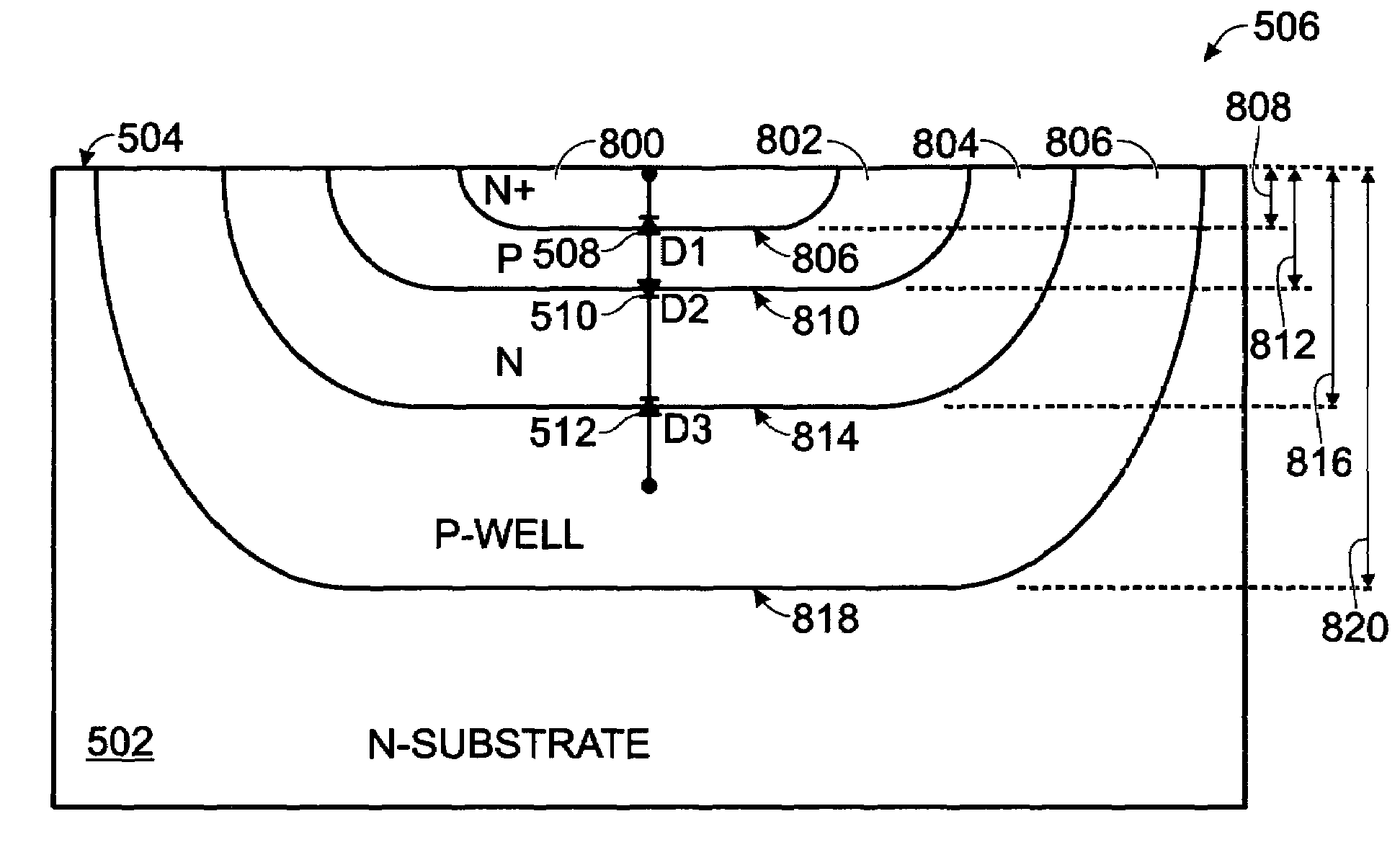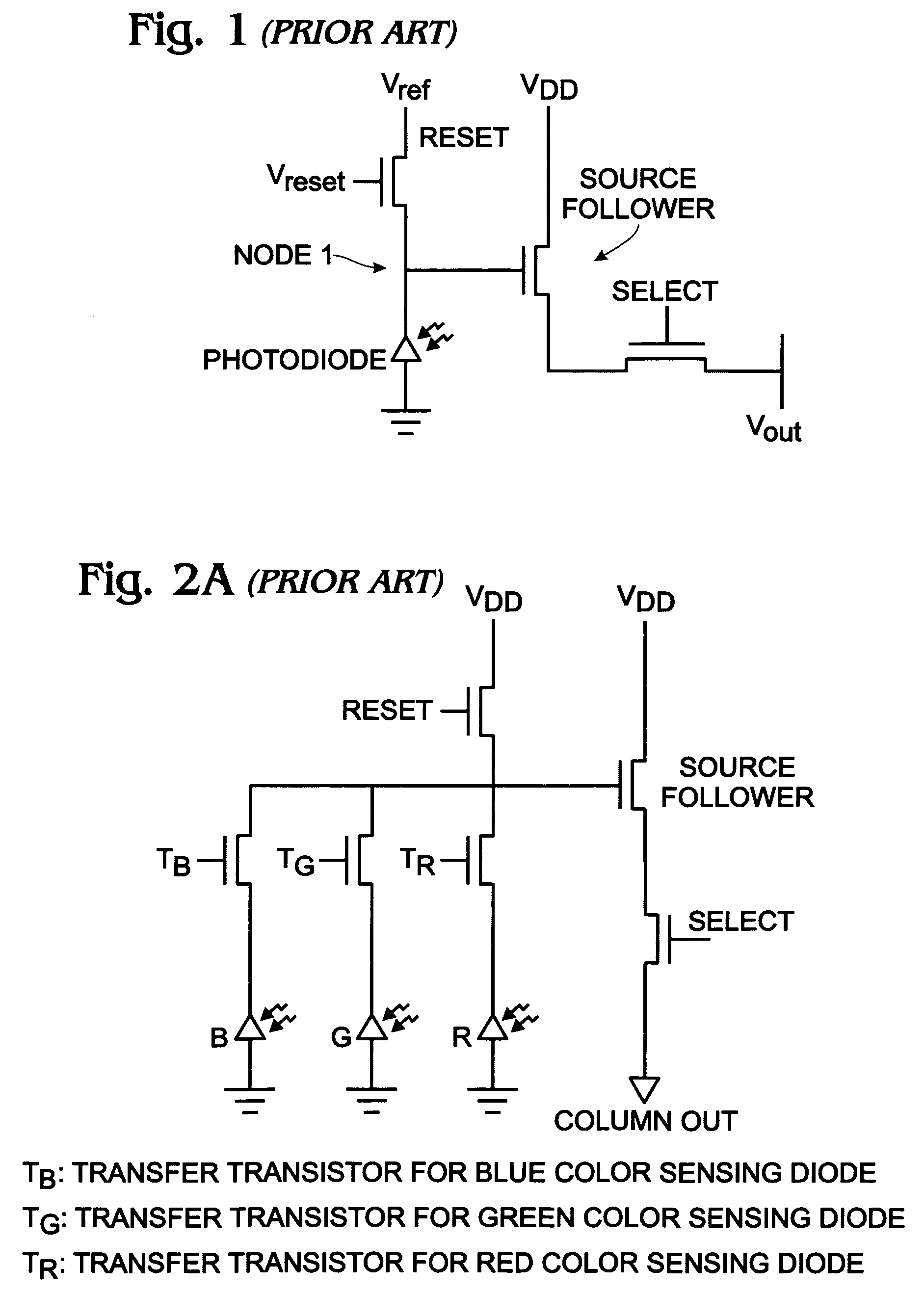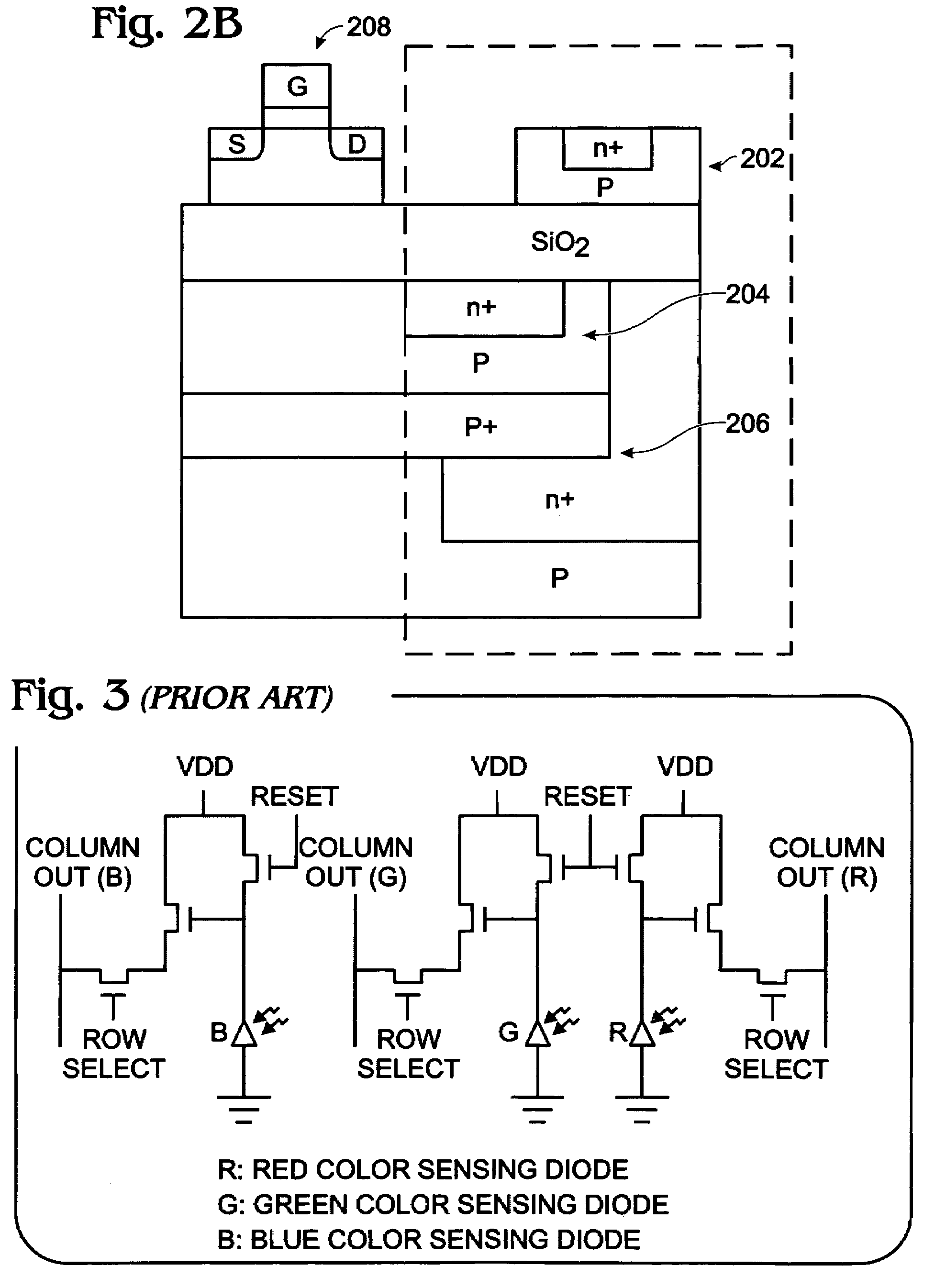Triple-junction filterless CMOS color imager cell
a color imager and filterless technology, applied in the field of imager pixel transistor set, can solve the problem that the wafer bonding process is not a common process in the conventional cmos wafer fabrication facility, and achieve the effect of reducing the area of the imager pixel
- Summary
- Abstract
- Description
- Claims
- Application Information
AI Technical Summary
Benefits of technology
Problems solved by technology
Method used
Image
Examples
Embodiment Construction
[0042]FIG. 5 is a schematic block diagram depicting a triple-junction complimentary metal-oxide-semiconductor (CMOS) filterless color imager cell. The imager cell 500 comprises a bulk silicon (Si) substrate 502 with a top surface 504. A photodiode set 506, including a first photodiode (D1) 508, second photodiode (D2) 510, and third photodiode (D3) 512, is formed as a triple-junction structure in the Si substrate 502. A transistor set 514 is connected to the photodiode set 506, for detecting an independent output signal for each photodiode.
[0043]More specifically, the transistor set 514 detects an output signal on line 516 for the first photodiode 508, but not the second diode 510 and third photodiode 512, at a first time. The transistor set 514 detects an output signal on line 518 for the second photodiode 510, but not the first diode 508 and third photodiode 512, at a second time. The second time is a different time than the first time. Likewise, the transistor set 514 detects an o...
PUM
 Login to View More
Login to View More Abstract
Description
Claims
Application Information
 Login to View More
Login to View More - R&D
- Intellectual Property
- Life Sciences
- Materials
- Tech Scout
- Unparalleled Data Quality
- Higher Quality Content
- 60% Fewer Hallucinations
Browse by: Latest US Patents, China's latest patents, Technical Efficacy Thesaurus, Application Domain, Technology Topic, Popular Technical Reports.
© 2025 PatSnap. All rights reserved.Legal|Privacy policy|Modern Slavery Act Transparency Statement|Sitemap|About US| Contact US: help@patsnap.com



